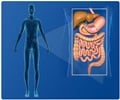- Nusinersen is a targeted therapy approved for the treatment of spinal muscle atrophy
- It improves muscle function and life expectancy in babies with spinal muscle atrophy type I
- The drug will give hope to several children and families affected by spinal muscle atrophy
- Progress in motor function was noted in 41 percent of children who received nusinersen. A total of 37 of 73 infants showed an improvement, in contrast to none among those who did not receive the medication. Several children who received the treatment showed movements like kicking, head control, rolling over, sitting, and standing.
- The children who received treatment had a 63 percent lower risk of death and lesser chances of being put on permanent assisted ventilation.
- The children who were treated earlier experienced better benefits as compared to those who did not receive nusinersen.
- The adverse effects were similar in the two groups. Nusinersen was not associated with any severe adverse effects in the study.
About Spinal Muscle Atrophy
Spinal muscle atrophy is a rare genetic condition that causes muscle weakness and wasting of the muscles. The condition occurs due to an abnormal or missing gene called the survival motor neuron gene 1 (SMN1) on chromosome number 5. This results in a problem in the nerves supplying the muscles of the limbs and other muscles under voluntary control. As a result, the muscles cannot be used and thin out. Atrophy of the swallowing and breathing muscles often results in repeated respiratory tract infections. Spinal muscle atrophy is of three types – type I which appears at birth or within a few months after birth, type II which appears between 6 to 18 months of age, and type III which appears at a later age, between 2 and 17 years. Type I disease is the most serious form of the condition with children usually succumbing to the disease within two years of age, usually due to frequent lung infections.Till the recent approval of nusinersen, treatment for spinal muscle atrophy was mainly symptomatic. During symptomatic treatment, muscle relaxants are used to relieve the spasms, while other drugs are used to reduce salivary secretions. In addition, physical and occupational therapy are used to improve the patient’s condition.
About Nusinersen
Nusinersen is a small fragment of DNA (an oligonucleotide) that helps to increase the production of the SMN protein and thus replace the missing protein in patients with spinal muscle atrophy. It is administered through an intrathecal injection directly into the cerebrospinal fluid, the fluid around the brain and the spinal cord. It has been approved for the treatment of all types of spinal muscle atrophy since it has shown benefit in the most serious form of the condition. It is administered in a dose of 12 mg every 14 days for the first three doses, while the fourth dose is administered 30 days after the third dose. Thereafter, the injection is administered once every four months. It has caused reactions like upper or lower respiratory infections and constipation. Since oligonucleotides have been associated with adverse effects like bleeding and clotting problems and kidney damage, nusinersen may also carry the risk of these complications.References:
- Finkel, Richard S, et al. "Nusinersen versus Sham Control in Infantile-Onset Spinal Muscular Atrophy." New England Journal of Medicine (2017): 2 Nov. 2017. N Engl J Med 2017; 377:1723-1732. DOI: 10.1056/NEJMoa1702752
- Spinal Muscular Atrophy Information Page - (https://www.ninds.nih.gov/Disorders/All-Disorders/Spinal-Muscular-Atrophy-Information-Page)
















